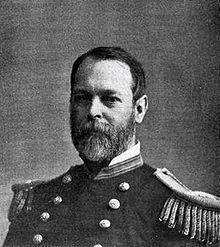Name William Harkness | ||
 | ||
Education | ||
William Harkness (December 17, 1837 – February 28, 1903) was an astronomer, born at Ecclefechan, Scotland, a son of James (1803–78) and Jane (née Wield) Harkness. Harkness died in Jersey City on February 28, 1903 at the age of 66.

Biography
Harkness was educated at Lafayette College (1854–56), graduated from the University of Rochester (1858), and studied medicine in New York City. He served as a surgeon in the Union armies during part of the American Civil War. From 1862 to 1865 he was an "aid in astronomy" at the United States Naval Observatory and then, after service on the monitor USS Monadnock (1865–66), was employed in the Hydrographic Office.
During the eclipse of August, 1869, Harkness discovered the coronal line K 1474. Three years later he was made a member of the Transit of Venus Commission, and had charge of the party at Hobart, Tasmania in 1879 and at Washington in 1882, when he became the executive officer. His most memorable accomplishments are related to the construction of telescopes, his theory of the focal curve of achromatic telescopes, and his invention of the spherometer caliper and other astronomical instruments. He was astronomical director of the Naval Observatory (1894–99) and director of the Nautical Almanac (1897–99). He retired from the Navy on attaining the relative rank of rear admiral (December, 1899). He was president of the American Association for the Advancement of Science (1893). Of his works, The Solar Parallax and its Related Constants (1891) is the most important.
